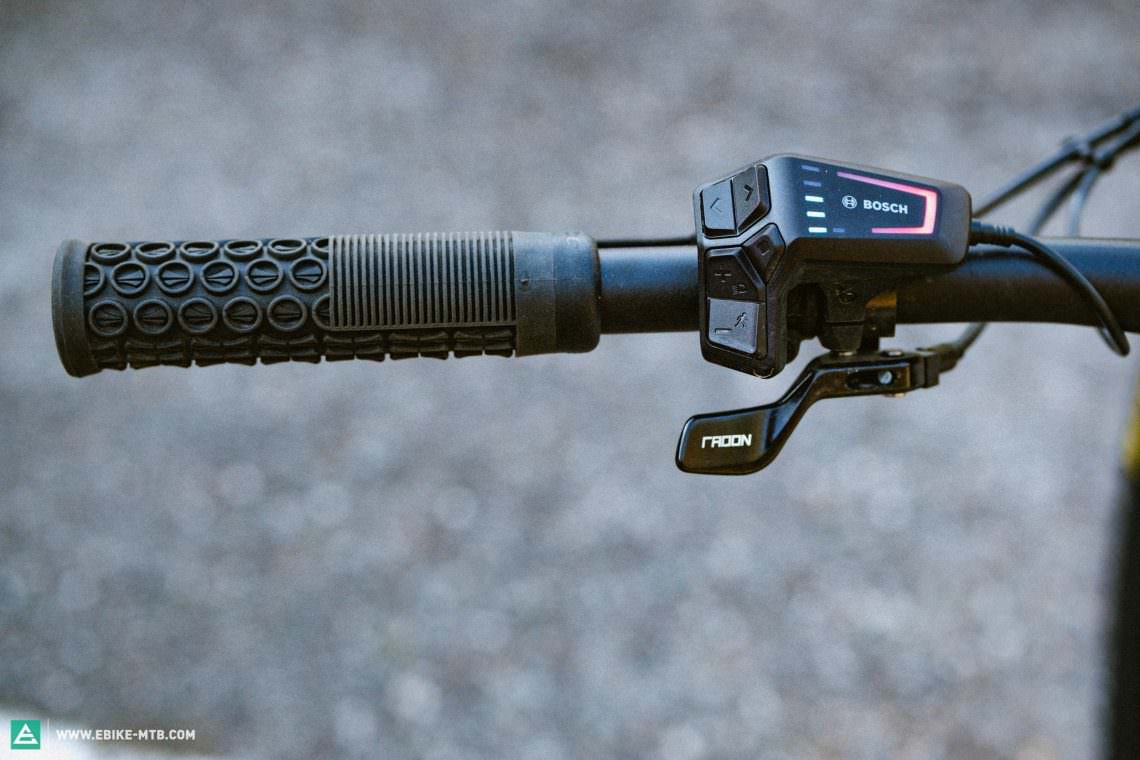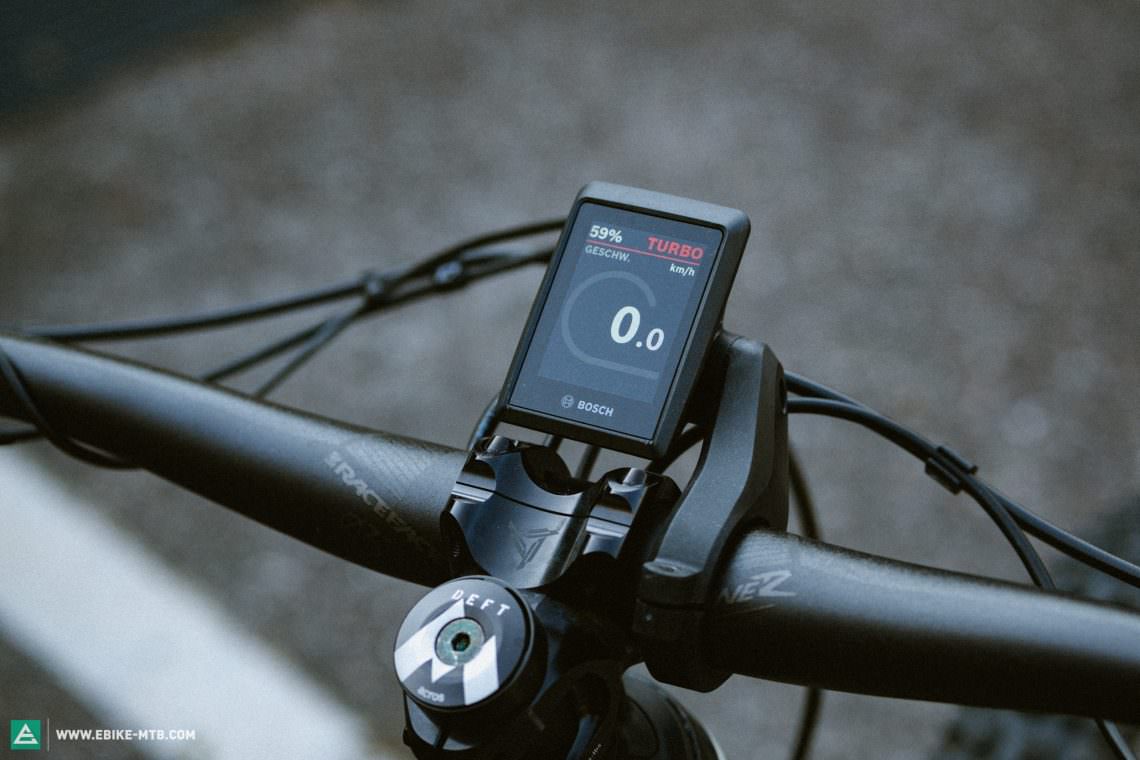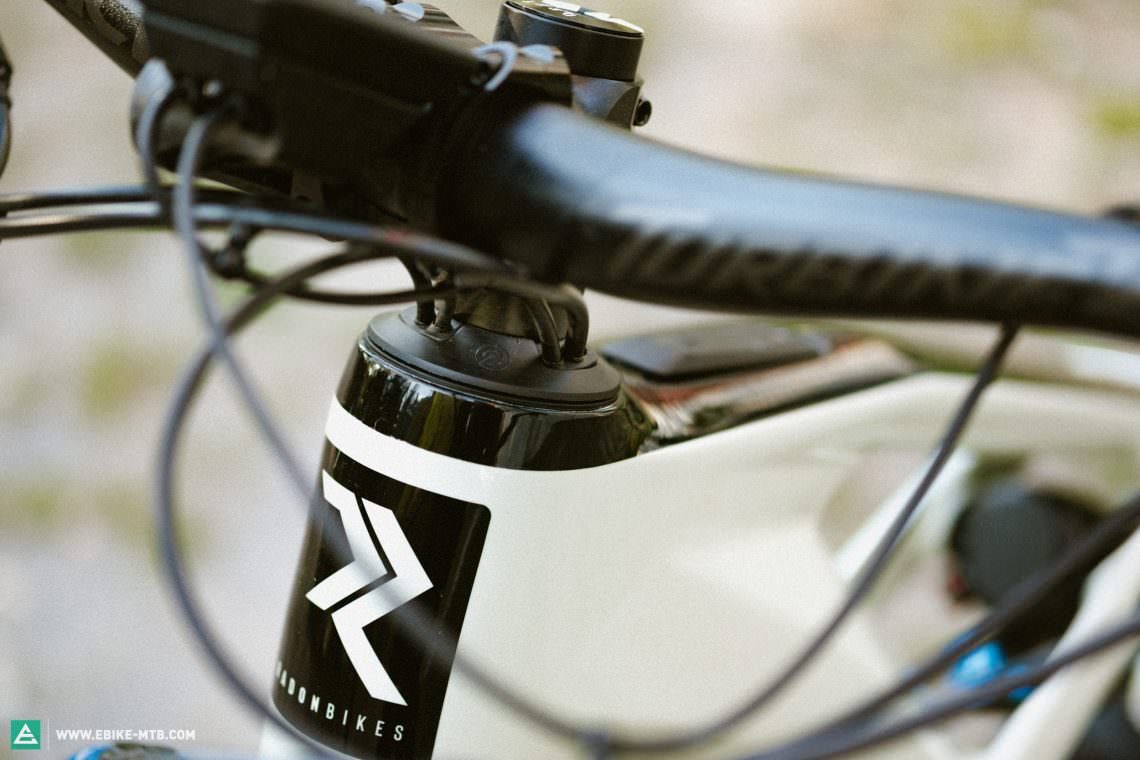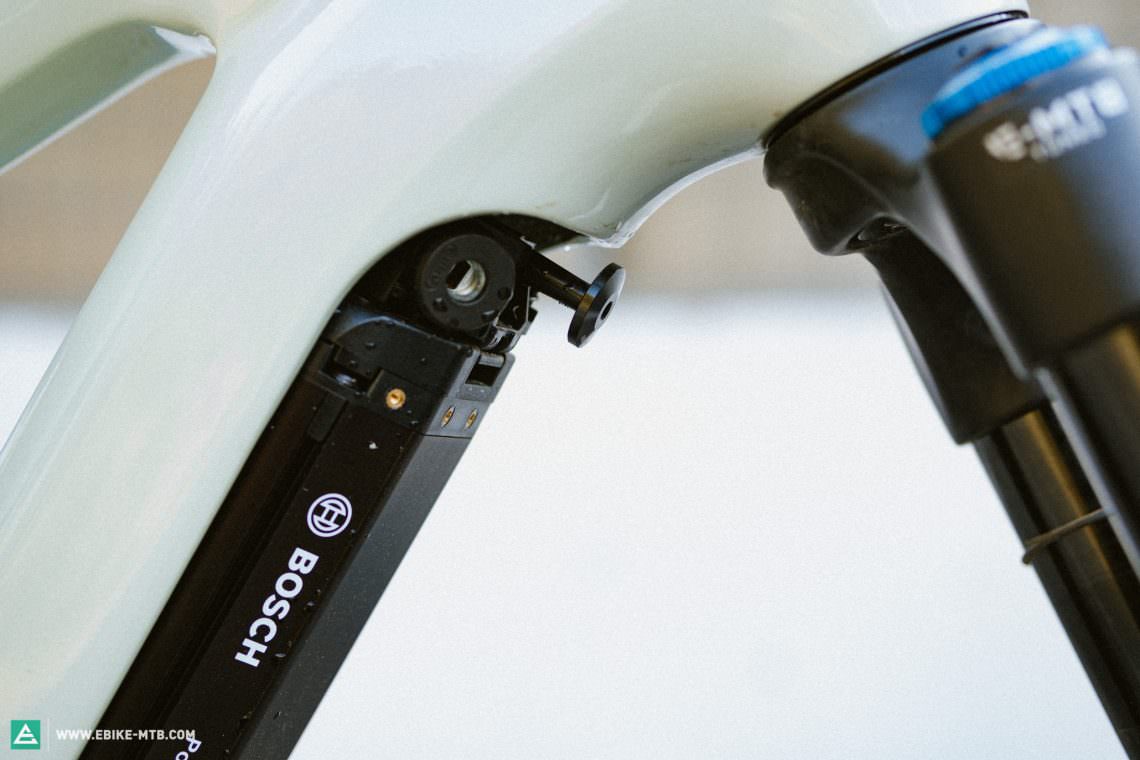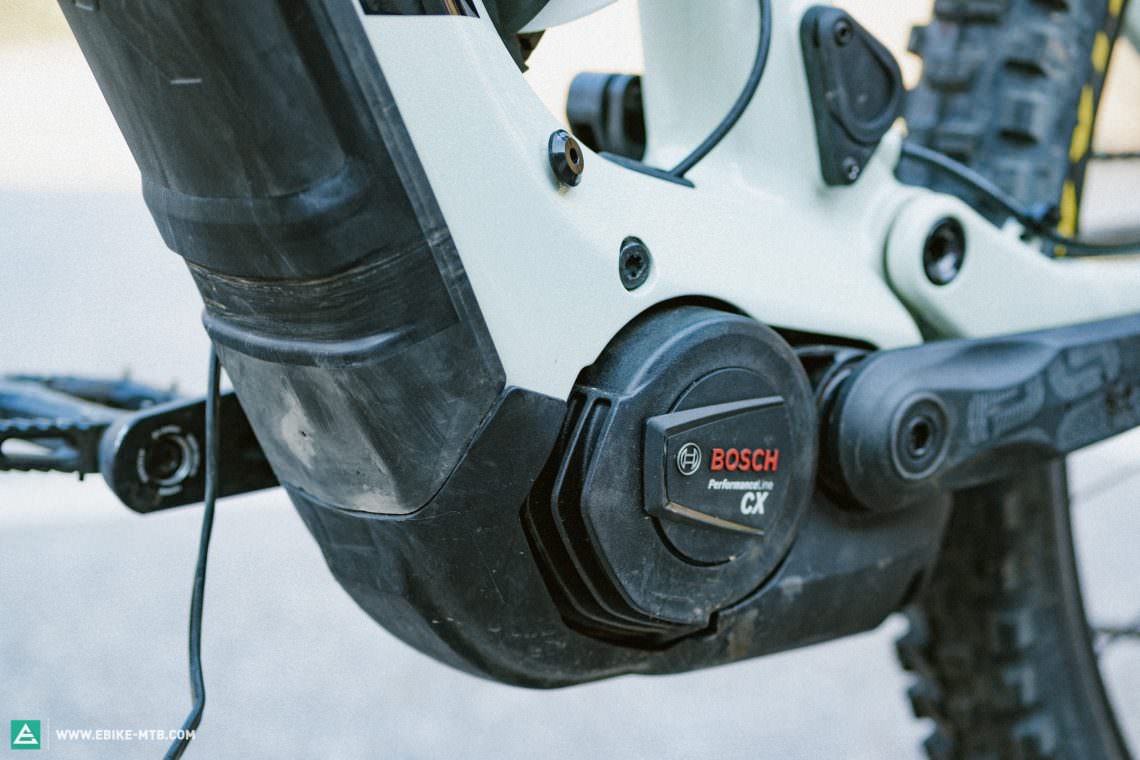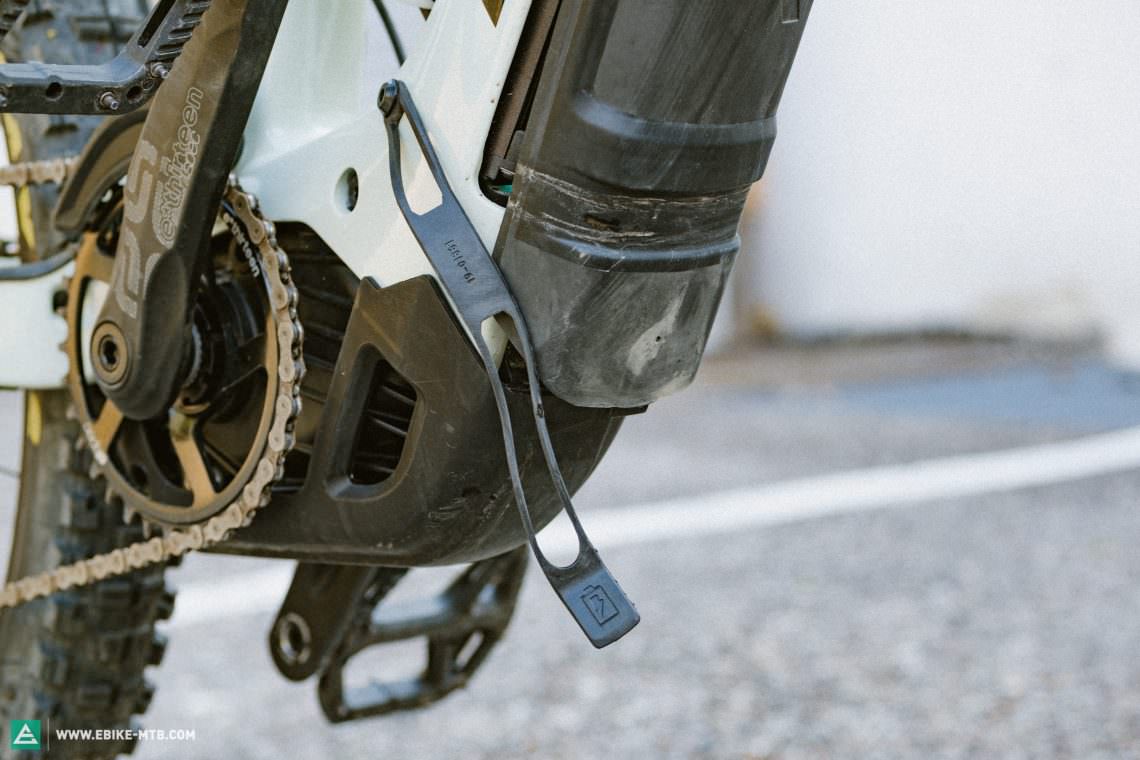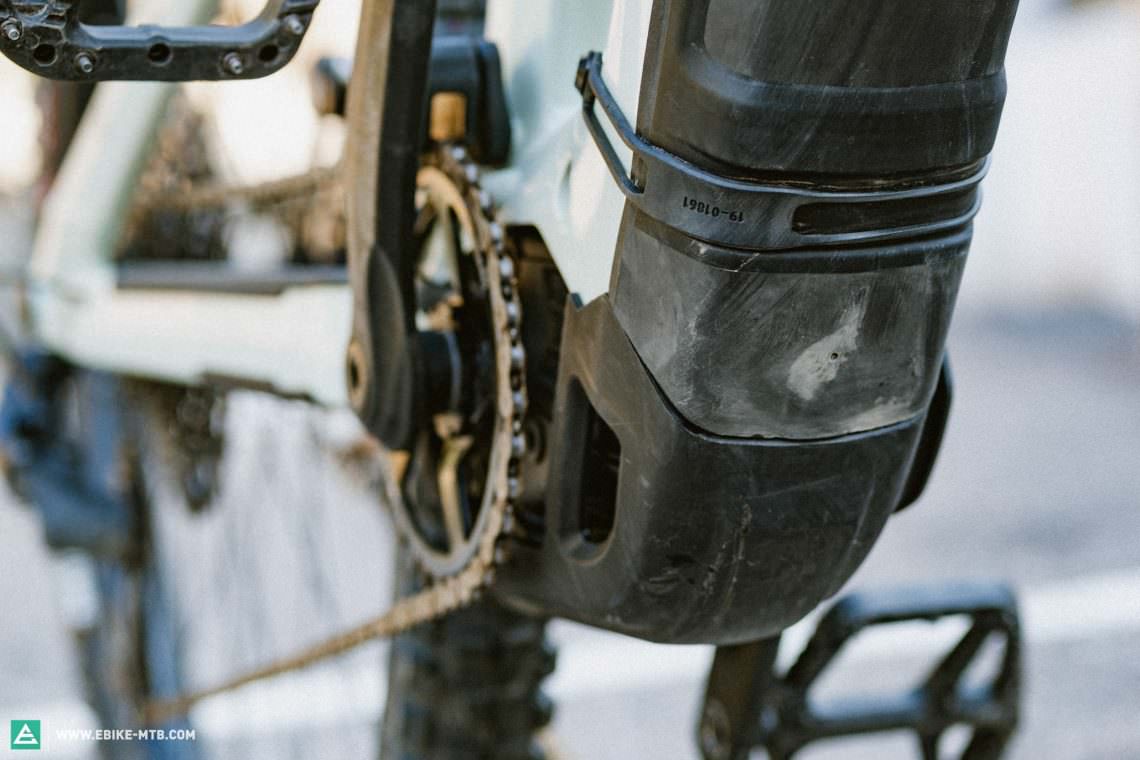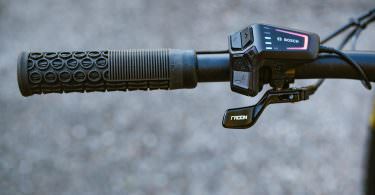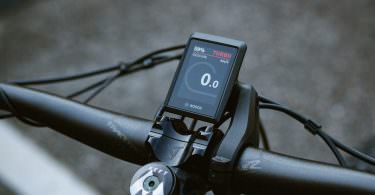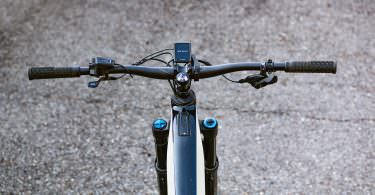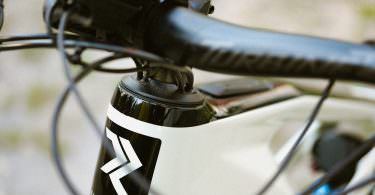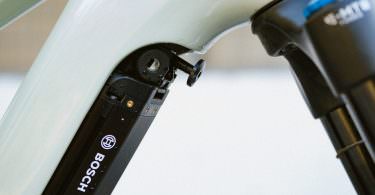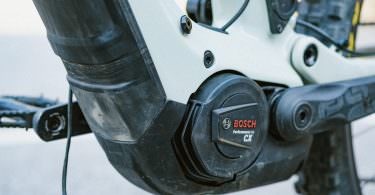The new 2022 RADON DEFT 9.0 eMTB is made for the steepest, most demanding descents. It features the latest Bosch Smart System motor, a 750 Wh battery and sensible components. It’s all based on a carbon front triangle and an aluminium rear end, providing a whopping 170 mm travel. All that priced at just € 5,999.

The RADON DEFT looks very much like the smaller RENDER, which offers 160 mm travel up front and 140 mm at the rear. Instead of the smaller 625 Wh battery of the previous Bosch generation, the new DEFT is exclusively available with a 750 Wh battery, paired with the Bosch Smart System. Pricing for the DEFT range starts at just € 5,199, which makes it one of the most affordable long-travel eMTBs available on the market.
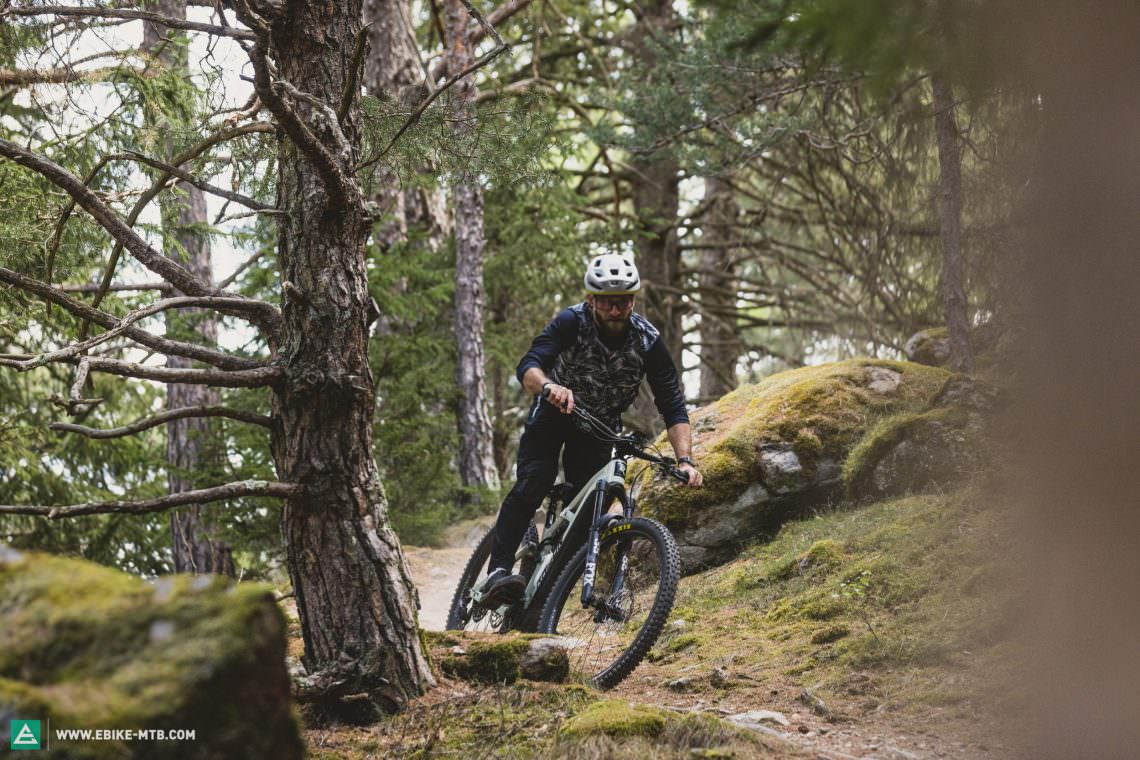
The new 2022 RADON DEFT 9.0 in detail
Until now, RADON’s full-suspension eMTB portfolio consisted of just one model, the RADON RENDER, but that’s set to change this year. RADON are expanding their portfolio with a long-travel offshoot, the DEFT. And there’s no second-guessing the RADON eMTB lineage: as with the new RADON RENDER introduced in mid-January, the shock on the RADON DEFT is parallel to the top tube. It features a carbon front triangle paired with an aluminium rear end. One of the distinctive design elements of the new DEFT is the brace that wraps around the top tube and stands out by about half a centimetre. There’s a kink in the seat tube below the suspension linkage, which limits the insertion depth of the seat post. Spoiler: all frame sizes come with a 150 mm dropper. There are almost no cable ports in the carbon front end. Instead, the cables are routed directly into the frame from the handlebar via the Acros headset.
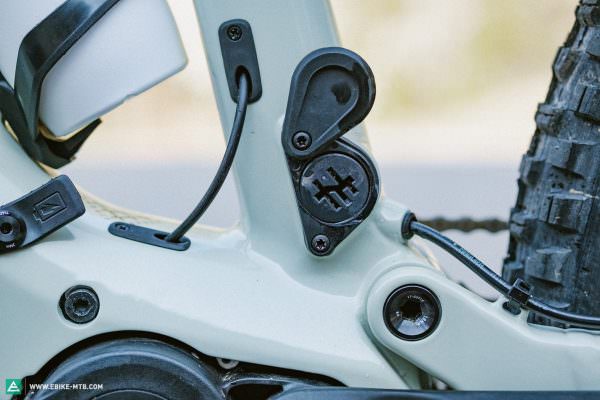
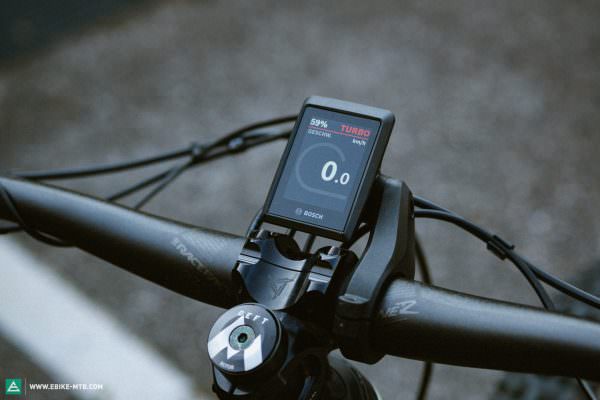
The cables are routed externally on the aluminium rear end and fastened with cable ties, looking a little less refined than the front. Due in part to the light carbon front triangle, the RADON weighs in at a respectable 24.7 kg in size L.
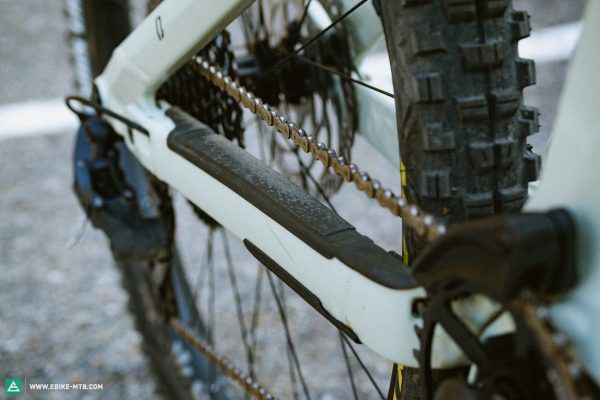
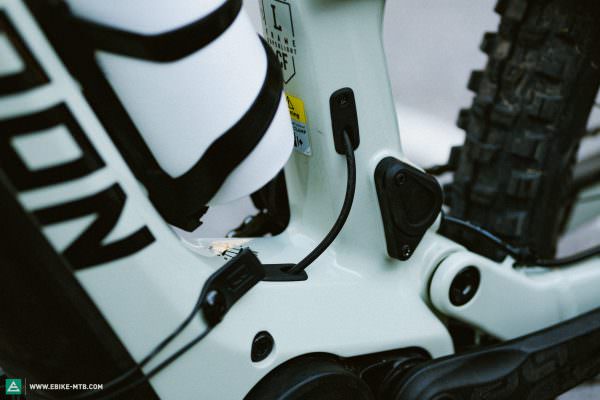


The battery cover gets hooked to a bolt at the top and held in place with a rubber tab at the bottom. It sits snugly and doesn’t rattle thanks to a rubber seal running around the edge. The standard Bosch lock is hidden under the cover, which keeps the frame looking clean and sleek. Despite the new carbon frame, the new DEFT 9.0 is unlikely to go down in eMTB history as a style icon. The frame is functional, the motor and the battery are well integrated, but the rear end looks cluttered and they’re still using a magnet on the rotor. This requires a wired sensor, which is attached to the rear end, but Bosch already have a wireless option that measures the wheel’s revolutions by means of a magnet on the valve.
The components of our RADON DEFT 9.0 test bike
The components of our RADON DEFT 9.0 test bike have been sensibly specced with maximum performance in mind. Apart from the rear tire, the components on our test bike are stock. The FOX Performance Elite suspension on the flagship RADON DEFT 10.0 consists of a FOX 38 fork and a FLOAT X shock, offering extensive adjustability. The only difference between these and the more expensive Factory models is the gold Kashima coating. The SRAM GX Eagle drivetrain gets the wheels turning, providing reliable gear shifts via the eMTB optimised single click shifter. For stopping, you get a set of Magura MT 5 brakes paired with 200 mm rotors front and back. They’re powerful and easy to modulate. Heavy and fast riders would benefit from a bigger 220 mm rotor at the front – which is standard on the flagship model, by the way. Making sure you stay rubber side down is a MAXXIS ASSEGAI up front and DHR II at the rear. Our test bike was fitted with an unusual combination, pairing the more robust EXO+ casing at the front with the flimsy EXO casing at the back. Fortunately, both tires will have the EXO+ casing on production models. In this case, heavy and fast riders should consider upgrading, resorting to the thicker Doubledown casing instead. As a result, you’ll be able to run lower tire pressures with the same puncture protection and benefit from added traction!
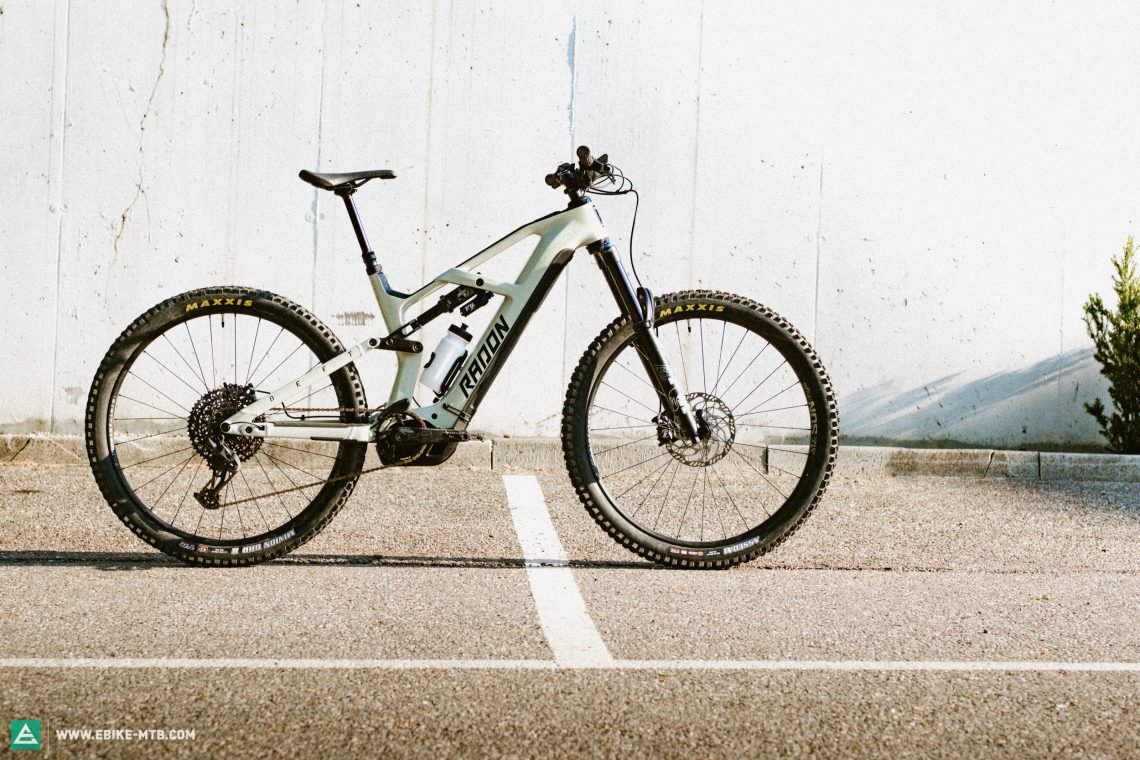
Radom DEFT 9.0
€ 5,999
Specifications
Motor Bosch Performance Line CX Gen4
Battery Bosch Powertube 750 Wh
Display Bosch LED Remote / Bosch Kiox 300
Fork Fox 38 Performance Elite, FIT GRIP2, E-Tuned 170 mm
Rear Shock Fox Float X Performance Elite 170 mm
Seatpost RADON Competition Dropper
Brakes Magura MT5 200/200 mm
Drivetrain SRAM GX Eagle 1x12
Stem Race Face Turbine R 35 mm
Handlebar Race Face Turbine R 780 mm
Wheelset SUNringlé Düroc SD37 Expert 29"
Tires MAXXIS ASSEGAI EXO+/ MINION DHR II EXO 2.5"/2.4"
Technical Data
Size M L XL
Weight 24.71 kg
Perm. total weight 135 kg
Trailer approval no
Kickstand mount no
Other models and availability of the RADON DEFT
In addition to the RADON DEFT 9.0 on test, you also get the RADON DEFT 8.0 and the flagship RADON DEFT 10.0. Along with the FOX suspension and the skin-wall tires on the 8.0, the various models come specced with different Bosch Smart System controls.

Priced at € 5,199, the entry-level RADON DEFT 8.0 completely dispenses with a display, which makes for a clean look. The Bosch handlebar remote indicates the battery status and support level via 5 LED bars using different colours, and you can pair your smartphone with the bike via Bluetooth even without the Kiox display. The DEFT 9.0 on test comes equipped with the Bosch Kiox 300 display. Both models will be available from July.
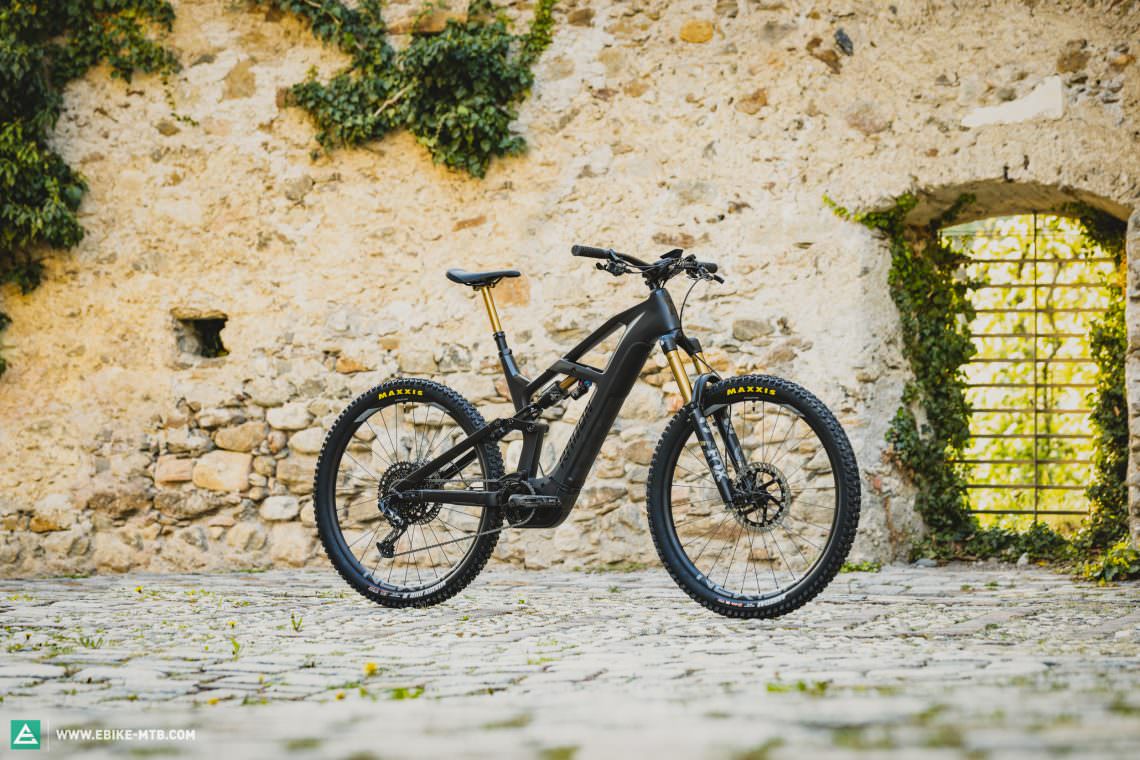
24,49 kg (size XL) | € 6,799 | Manufacturer’s website
The range-topping DEFT 10.0 will not be available until October. What’s striking about this model is that, instead of a display, it has a cut-out in the top tube. It’s open to speculation whether we’ll see a new Bosch display here, but the position itself is gaining traction, as can be seen with the new UNNO BOÖS or the Trek Rail. Either way, the components leave little to be desired, including FOX Factory suspension with the Kashima coating and a FOX dropper post, all for just € 6,799.
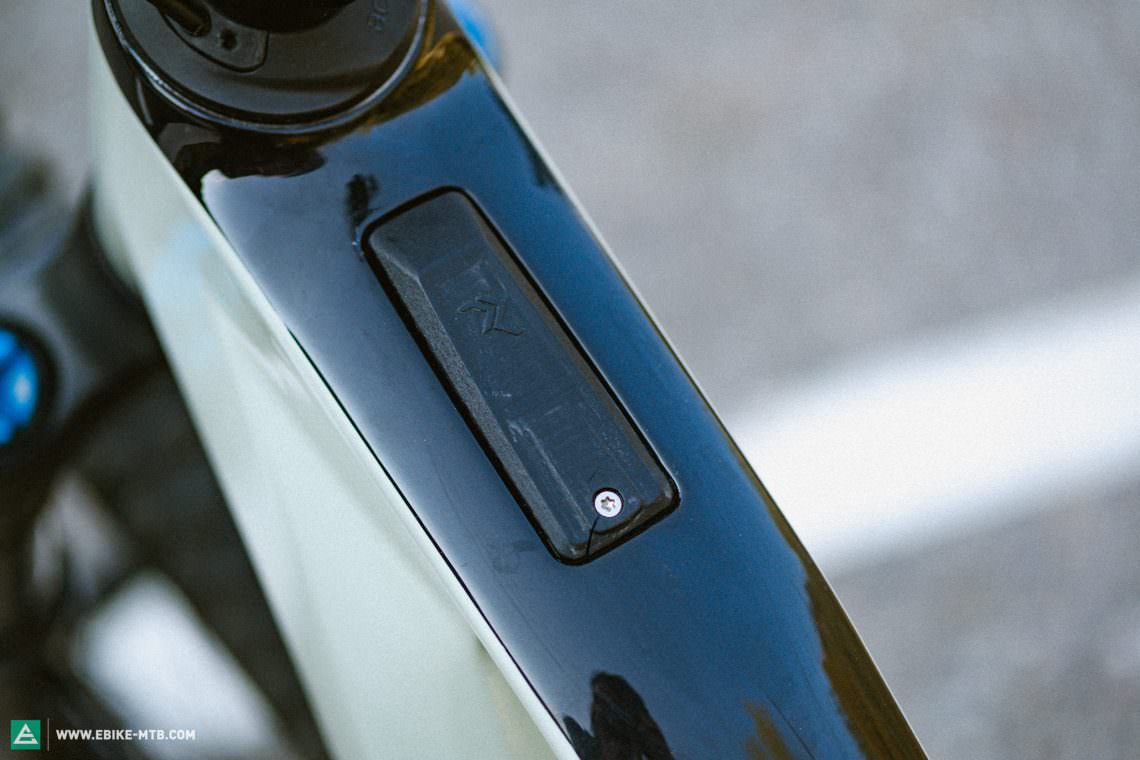
The geometry of the new 2022 RADON DEFT
The new RADON DEFT features long and slack geometry. What stands out is the relatively long 459 mm chainstays across all frame sizes. The DEFT is available in three sizes, M, L and XL. Annoyingly for tall riders, the dropper post length doesn’t grow with the bigger sizes, remaining static at 150 mm. You might want to upgrade here, but you’ll have to check whether you can fit a longer dropper beforehand because the kink in the seat tube is likely to restrict the insertion depth for longer models!
| size | M | L | XL |
|---|---|---|---|
| Seat tube | 425 mm | 455 mm | 490 mm |
| Head tube | 105 mm | 115 mm | 135 mm |
| Head angle | 64.6° | 64.6° | 64.6° |
| Seat angle | 76° | 76° | 76° |
| Chainstay | 459 mm | 459 mm | 459 mm |
| BB Drop | 20 mm | 20 mm | 20 mm |
| Wheelbase | 1243 mm | 1262 mm | 1286 mm |
| Reach | 455 mm | 470 mm | 485 mm |
| Stack | 622 mm | 631 mm | 649 mm |
The new 2022 RADON DEFT 9.0 on the trail
When you first swing your leg over it, the DEFT feels just as plush and burly as it looks. The bike is quite long, putting you in a stretched position with a lot of weight on your hands. We must note that our 1.77 m test rider is at the shorter end of the spectrum for a size L bike – downsizing could be useful in this case. As soon as you hit an incline, the riding position becomes more comfortable, and the Bosch Smart System motor offers plenty of assistance. On steep climbs, the rear end generates lots of traction and the long chainstays make sure the front wheel stays planted.
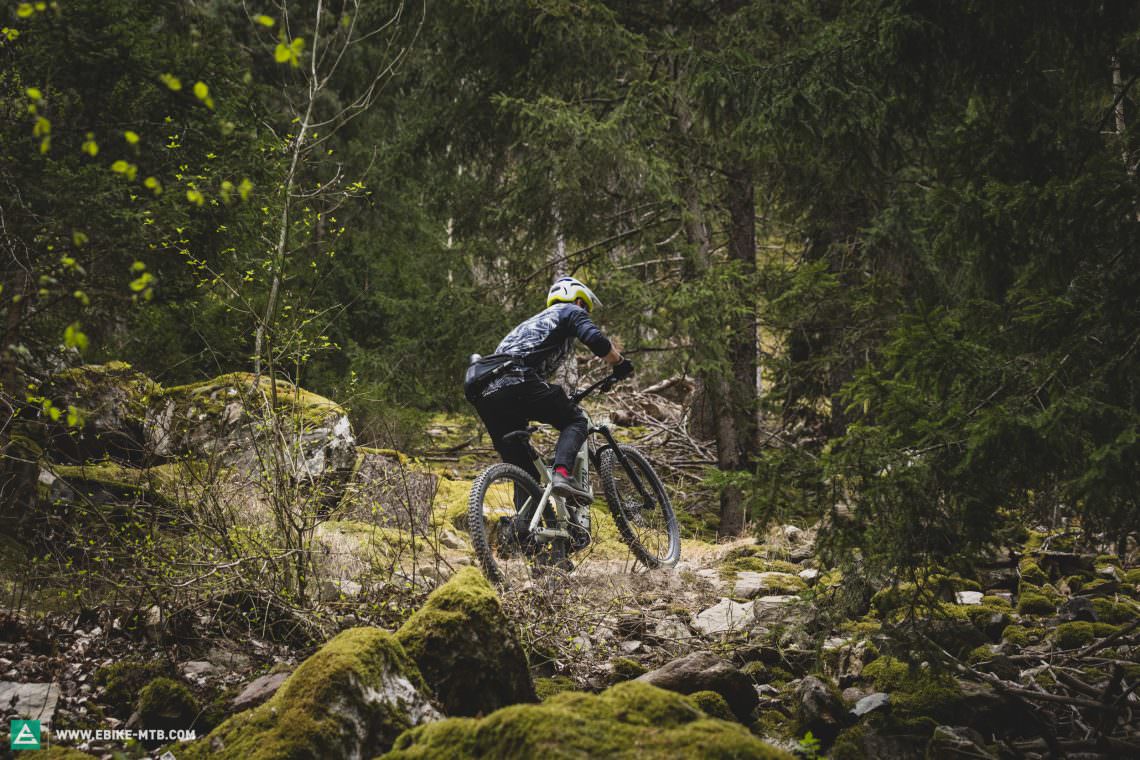
Through tight bends, the long chainstays force you to slide the rear wheel out or do a nose pivot to get the DEFT around the corners. However, the bike loves railing berms all the more. Thanks to the balanced suspension, the DEFT maintains its geometry through compressions, positioning the rider centrally on the bike. As such, the handling is intuitive and confidence-inspiring. It allows you to fly from one berm to the next with ease.

The DEFT doesn’t just like going fast on shaped tracks. It also thrives on rough, natural trails, and you can tune the sensitive FOX Performance Elite suspension perfectly to suit the terrain and your riding style. No matter how demanding things get, the DEFT always offers sufficient reserves and forgives rider errors generously.
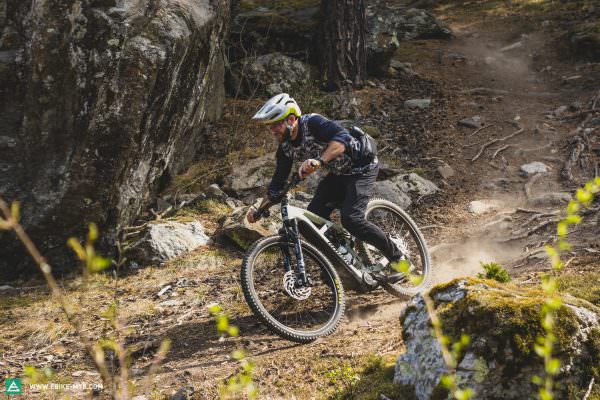
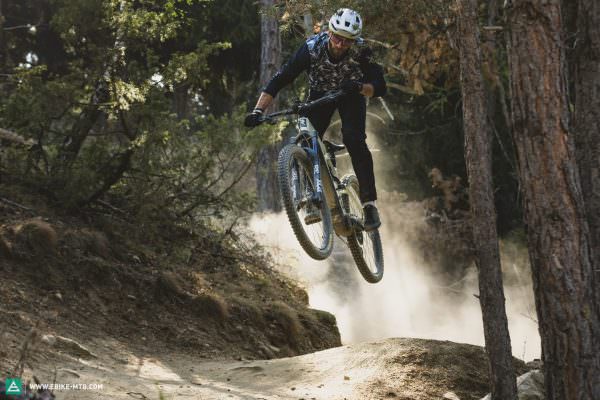
Conclusion on the new 2022 RADON DEFT 9.0
The RADON DEFT has made a successful debut: it’s a capable eMTB for gravity-oriented riders who like making the most of long-travel suspension. The bike thrives most on shaped tracks with berms and jumps. It doesn’t just deliver on the descents but will also get you back to the top without complaints. If you don’t mind the external cable routing on the aluminium rear end, you get a bike featuring the latest Bosch tech and high-quality components at a fair price.
Tops
- balanced suspension
- high-quality components considering the price
Flops
- rudimentary integration at the rear
For more information, visit radon.de
Did you enjoy this article? If so, we would be stoked if you decide to support us with a monthly contribution. By becoming a supporter of E-MOUNTAINBIKE, you will help secure a sustainable future for high-quality cycling journalism. Click here to learn more.
Words: Julian Schwede Photos: Christian Kneip/Julian Schwede




